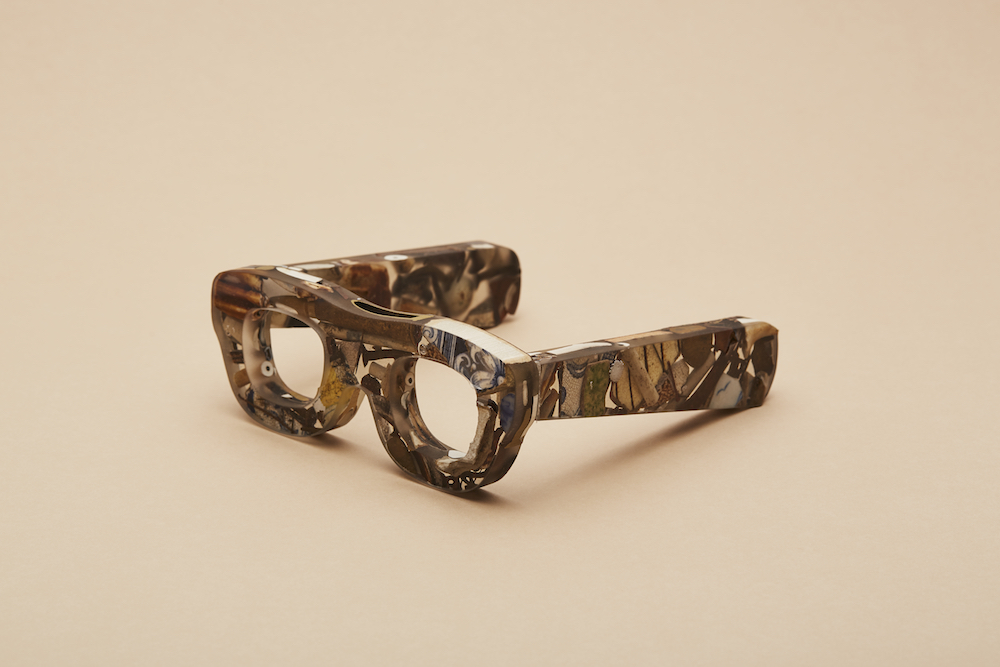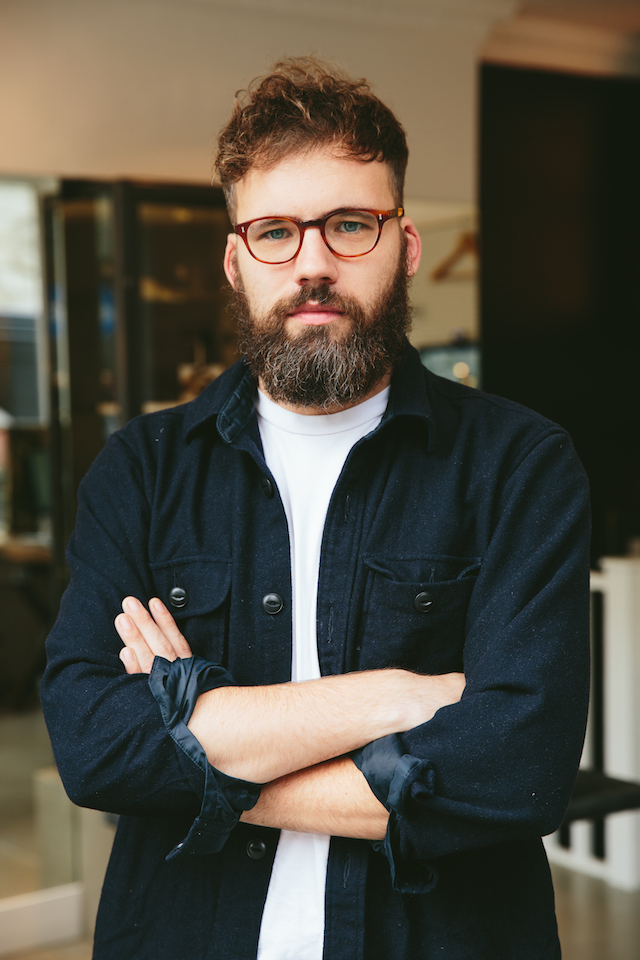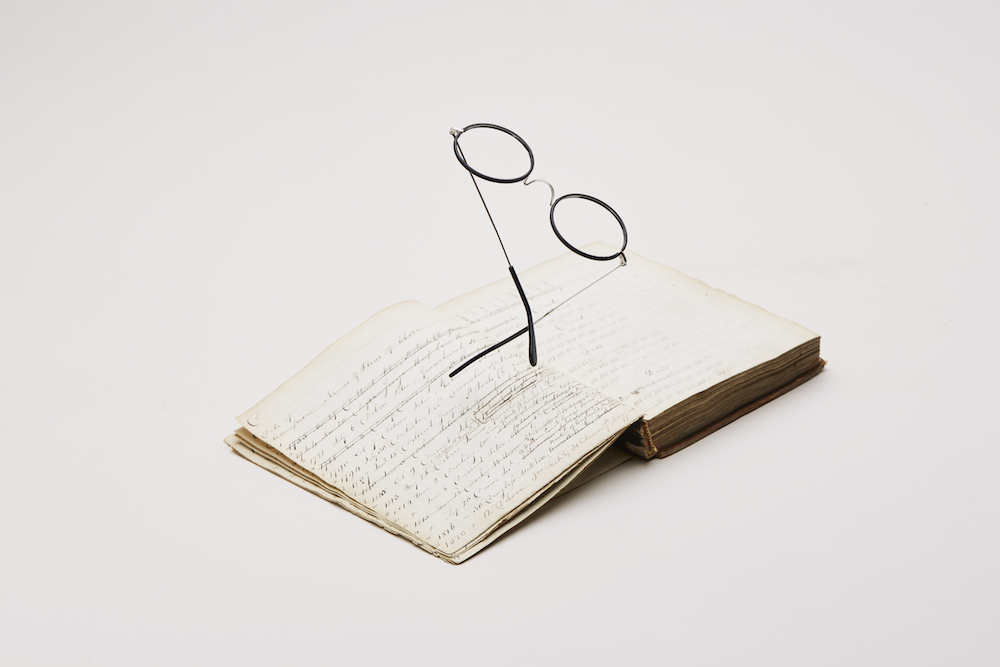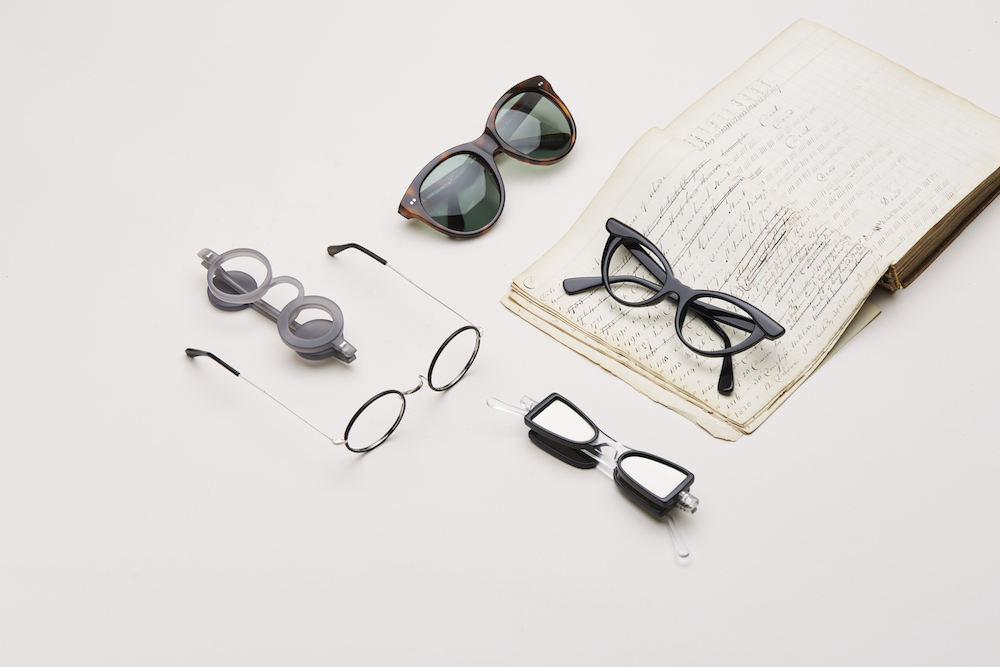The founder of Cubitts celebrates London’s revolutionary relationship with spectacles in a new, collaborative exhibition

Despite its remarkable history, not many people know that London’s love affair with spectacles spans six centuries. Cubitts, the spectacles brand founded in King’s Cross in 2013, is celebrating the capital’s landmark moments and forgotten optical stories with a new exhibition in St. James’s. Moving from the earliest pair of glasses found nearly six hundred years ago in Trig Lane to the post-world-war-two manufacturing boom, sixties glamour to modern materials innovation, the collection concisely charts an industry and craft marked by growth, decline and now finally, renewal.
Among the examples is Isaac Newton’s revolutionary treatise Opticks, James Ayscough’s early form of sunglasses and British inventions such as the monocle, the Supra and the Lorgnette. Commissioned especially for the exhibition is a wonderfully unique frame made from London’s very bones. ‘A Frame for London’ has been created from materials mudlarked from along the banks of the River Thames, including Tudor hair pints, Bellarmine ‘witch pots’, a WW2 bullet and shell, clay smoking pipes and Victorian marble.
Port talked to Tom Broughton, curator of the exhibition and founder of Cubitts, on why sharing these stories is important, how our relationship to spectacles has evolved and why form should follow function.

How do exhibitions like this retrospective compliment the brand?
As a company we focus on storytelling and education, but not in an overly paternalistic, pedagogical way. I started Cubitts because I loved the product, I loved spectacles. I could never understand why people didn’t get excited by them and it always amazed me when, before a family photo, everyone would take their glasses off. Why? They’re brilliant! Over the last five years we’ve been trying to tell these little stories to get people excited about them. How can we change people’s perception of it from something they need, to something they desire and treasure? Cubitts is just one part of the story and that’s why other brands like Cutler and Gross and Goldsmiths were so happy to be a part of this, because it’s good for everyone if people appreciate and care about them more. The exhibition is a great form of succinct storytelling, making people see something in a new light, a new perspective.
Cubitts is named after the Cubitt brothers, three Victorian engineers who revolutionised the building industry. How do you hope to revolutionise the world of optics?
We’re called Cubitts because we wanted to take their principles and apply them to another market. They completely changed the building industry, which is as old as humans are, but was very dysfunctional at the time. Extremely time consuming, expensive, poor quality. But in the early 1900s they created a modern system of building work, streamlining it, improving on the craft. It’s why their buildings still endure today. Companies like Specsavers were based on cost and convenience. The frames themselves were crap, the environment’s sterile, plastic everywhere, a green-yellow light tinge to everything – an eye test that felt like you were at the dentist! The sales staff are clearly on individual commission and you could be selling anything in that space. When I was 20 years old, living in Leicester, I got my first pay check and bought some Cutler and Gross frames. Sent from London, all 100 miles, I remember getting them out of the box and was so excited. Why can’t everyone have that feeling?

How has our relationship to glasses changed over the past century?
If you ask the esoteric question, what is a pair of spectacles, it’s essentially some form of corrective lens. For a long period of time they were an object for doing, ‘I’m going to read this book, write these legal documents, watch this chariot race’. Because of Edward Scarlett’s work in the eighteenth century they morphed into supplemented living, you could have frames on all day. It was still seen as a medical device and even in the golden age of glasses, they were described similarly to a prosthetic limb. It’s a sign of disability, and myopia is in fact the most widespread disability in the world. It wasn’t until Michael Birch and the glamour movement of the 1950s, 1960s, when you’ve suddenly got Michael Caine and Peter Sellers wearing glasses, that things changed. This slowly eked into the public consciousness and they began to be appreciated for accentuating the face, changing not only how you see, but how you’re seen. Really though, it feels like the last five to ten years have seen the most change compared to the previous fifty, because now spectacles are finally cool.
You’ve said in the past that your rivets are directly influenced by butterfly rivets, in which form follows function, why is this an important principle for Cubitts?
We want to celebrate our spectacles, so our frames don’t pretend to be anything else. When Lewis Cubitt designed Kings Cross Station, arguably the world’s first modernist building in 1847, he didn’t pretend it was anything else other than a train station. Compare that to St. Pancreas by Gilbert Scott, fifty years younger, and it’s a Neo-Gothic structure, gargoyles all over it. It could be a hotel, it could be residential, who the fuck knows what it is? We want to be functional. In Granary Square you can still see those Lewis Cubitt butterfly rivets in the ground. Their shape bonds and holds together the granite blocks, structurally holding the frame together. The butterfly rivet has endured since the earliest examples of Ancient Egypt, and they’ll be found 300 years from now, assuming we get through Brexit.

How do you negotiate the changing consumer attitudes to online shopping and physical bricks and mortar?
We still find online tricky because it’s so flat and value driven. Many online levers are things we just don’t do as a company, like discounts, sales, Black Friday or influencers. As a consequence, it’s been a difficult relationship, but it’s just another channel to tell our story. How can we, in a digital world, accurately convey the look and the touch and the feel? We want to grow into a genuinely global brand, and we often discuss how we can be egalitarian as we grow.
What will the future of spectacles look like? Built in AR / VR?
Google Glass launched, closed, and now they’re coming back, but the constraint isn’t the technology for things like AR or VR, it’s our brains. We just can’t process that much information at once. There’s a really interesting study by MIT that showed if you tried to quantify the amount of data and information that’s going around you at any given time, it’s close to 2 billion bits per second. They estimated that the subconscious of a human being can process about 2,000 bits per second and that our conscious state can process roughly 120-150 bits per second. To have a conversation takes up about 60 bits per second. So the question for any future development or digital integration is – how can we overcome the limitations of the human brain?
RETROSPECTIVE: London, Spectacles, and Half a Millennia by Cubitts opened November, 2018 at St James’s Market Pavilion